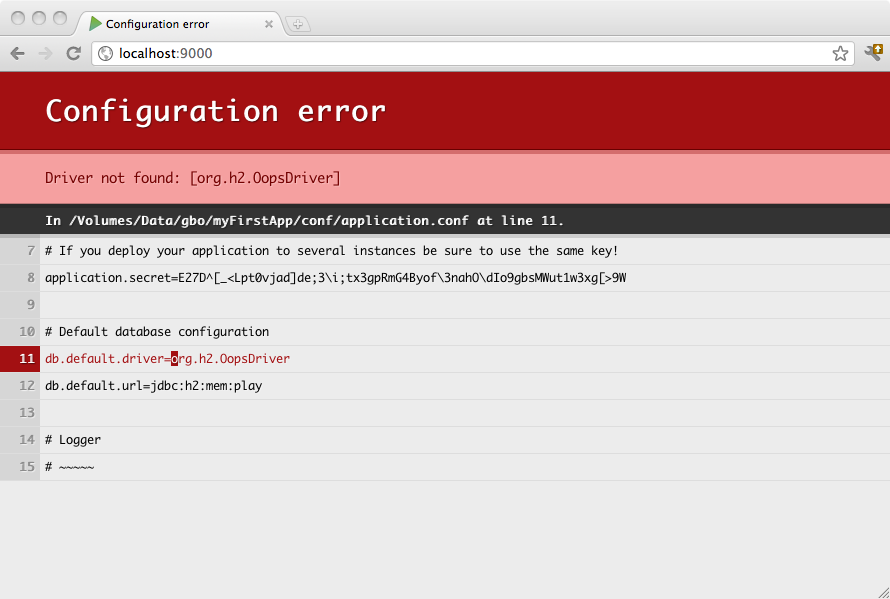§Accessing an SQL database
§Configuring JDBC connection pools
Play 2.0 provides a plug-in for managing JDBC connection pools. You can configure as many databases you need.
To enable the database plug-in, configure a connection pool in the conf/application.conf file. By convention, the default JDBC data source must be called default:
# Default database configuration
db.default.driver=org.h2.Driver
db.default.url=jdbc:h2:mem:play
To configure several data sources:
# Orders database
db.orders.driver=org.h2.Driver
db.orders.url=jdbc:h2:mem:orders
# Customers database
db.customers.driver=org.h2.Driver
db.customers.url=jdbc:h2:mem:customers
If something isn’t properly configured you will be notified directly in your browser:
§Accessing the JDBC datasource
The play.api.db package provides access to the configured data sources:
import play.api.db._
val ds = DB.getDatasource()
§Obtaining a JDBC connection
There is several ways to retrieve a JDBC connection. The first is the most simple:
val connection = DB.getConnection()
But of course you need to call close() at some point on the opened connection to return it to the connection pool. Another way is to let Play manage closing the connection for you:
DB.withConnection { conn =>
// do whatever you need with the connection
}
The connection will be automatically closed at the end of the block.
Tip: Each
StatementandResultSetcreated with this connection will be closed as well.
A variant is to set the connection auto-commit to false automatically and to manage a transaction for the block:
DB.withTransaction { conn =>
// do whatever you need with the connection
}
§Importing a Database Driver
Other than h2 for in-memory database, useful mostly in development mode, Play 2.0 does not provide any database driver. Consequently, to deploy in production you will need to add your database driver as a dependency.
For example, if you use MySQL5, you need to add a dependency for the connector:
val appDependencies = Seq(
// Add your project dependencies here,
...
"mysql" % "mysql-connector-java" % "5.1.18"
...
)




